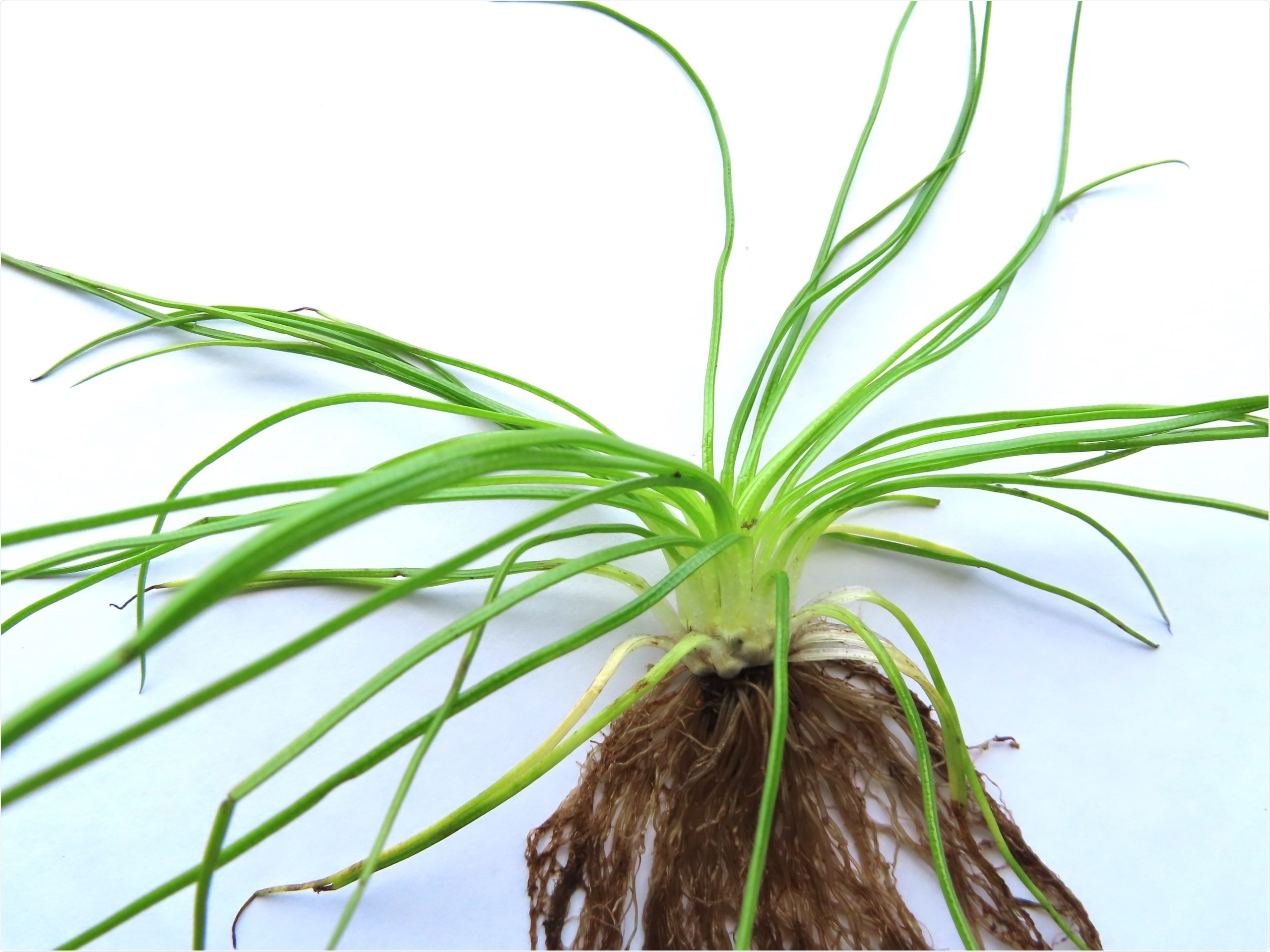Quillworts, an ancient group of around 250 small aquatic plants, have been greatly neglected by modern botanists.

The genome of this humble quillwort (Isoetes taiwanensis) could hold secrets to help make crops use water or carbon dioxide more efficiently. Image Credit: Yao-Moan Huang.
A team of scientists headed by Boyce Thompson Institute’s Fay-Wei Li sequenced the first quillwort genome and unraveled some secrets of the plant’s unique technique of photosynthesis—secrets that can ultimately lead to the engineering of crops with more effective use of water and carbon dioxide (CO2).
The majority of the plants breathe in CO2 and use sunlight to convert the gas into sugar during the daytime and stop breathing when the sun goes down. However, plants in arid regions can breathe in CO2 at night and then stop breathing while they carry out photosynthesis in the daytime. This strategy is known as CAM photosynthesis, helping the plants to save water.
Around four decades ago, quillworts—plants belonging to the genus Isoetes—became the first group of aquatic plants identified to employ CAM photosynthesis. Daytime water loss is not a concern for aquatic plants. But quillworts utilize CAM to gather CO2 dissolved in water and store it overnight. This is to prevent competition with other aquatic plants and organisms, like algae, that consume up water levels of the gas during the daytime.
To examine the genetic mechanisms controlling quillworts’ CAM photosynthesis mechanism, Li’s group assembled a high-quality genome for I. taiwanensis and identified certain similarities between quillwort and terrestrial plant CAM photosynthesis, along with differences.
As aquatic plants, Isoetes have evolved CAM photosynthesis in a fundamentally different environment than terrestrial plants in dry habitats. These results tell us there are more evolutionary pathways to CAM than we previously thought.”
Fay-Wei Li, Boyce Thompson Institute
Li is also an adjunct assistant professor of plant biology at Cornell University. The study was published on November 3rd, 2021, in the Nature Communications journal. The researchers employed the genome to pinpoint CAM pathway genes and to analyze their expression patterns, including the changes of those patterns across the day/night cycle.
A noteworthy difference between CAM in quillworts and terrestrial plants is in the function of phosphoenolpyruvate carboxylase (PEPC). Plants contain two kinds of PEPC—plant-type, long recognized for its vital role in photosynthesis, and bacterial-type, which imitates the PEPC present in bacteria.
In all other plants, bacterial-type PEPC plays a role in a range of metabolic processes but not photosynthesis. In Isoetes, both types appear to be involved in CAM – something that hasn’t been found in any other plant and points to a distinct role for bacterial-type PEPC in aquatic CAM.”
David Wickell, Study First Author and Doctoral Student, Cornell University
David Wickell is a doctoral student in Li’s lab.
According to Li, plants also possess multiple components of CAM, the reason why the mechanism has evolved numerous times. However, aquatic and terrestrial plants used various versions of those components probably to fulfill the requirements imposed by their varying environments.
The researchers also identified that expression levels of some circadian regulators increased at various times of day in quillworts compared to terrestrial plants, pointing out that the circadian clock may control CAM functions diversely in Isoetes.
The researcher’s further steps include analyzing CAM gene expression patterns in I. engelmannii (Engelmann’s quillwort), which employs C3 photosynthesis when above water and CAM when completely submerged in water. Eventually, the discovery can be employed to engineer crops to endure environmental stresses.
It would boil down to manipulating the circadian clock genes that regulate CAM components to help plants become more efficient at conserving water or making better use of the available CO2. It’s an exciting idea to consider.”
David Wickell, Study First Author and Doctoral Student, Cornell University
The team’s interest in Isoetes took shape from a fascinating research legacy at BTI. The standard reference summing up the characteristics and habitats of the genus is still Norma Pfeiffer’s Monograph on the Isoetaceae, published in 1922. Pfeiffer was one among BTI’s original scientists when the Institute opened its doors in Yonkers, New York, in 1924. The plant morphologist stayed at BTI until retirement in 1955.
Source:
Journal reference:
Wickell, D., et al. (2021) Underwater CAM photosynthesis elucidated by Isoetes genome. Nature Communications. doi.org/10.1038/s41467-021-26644-7.